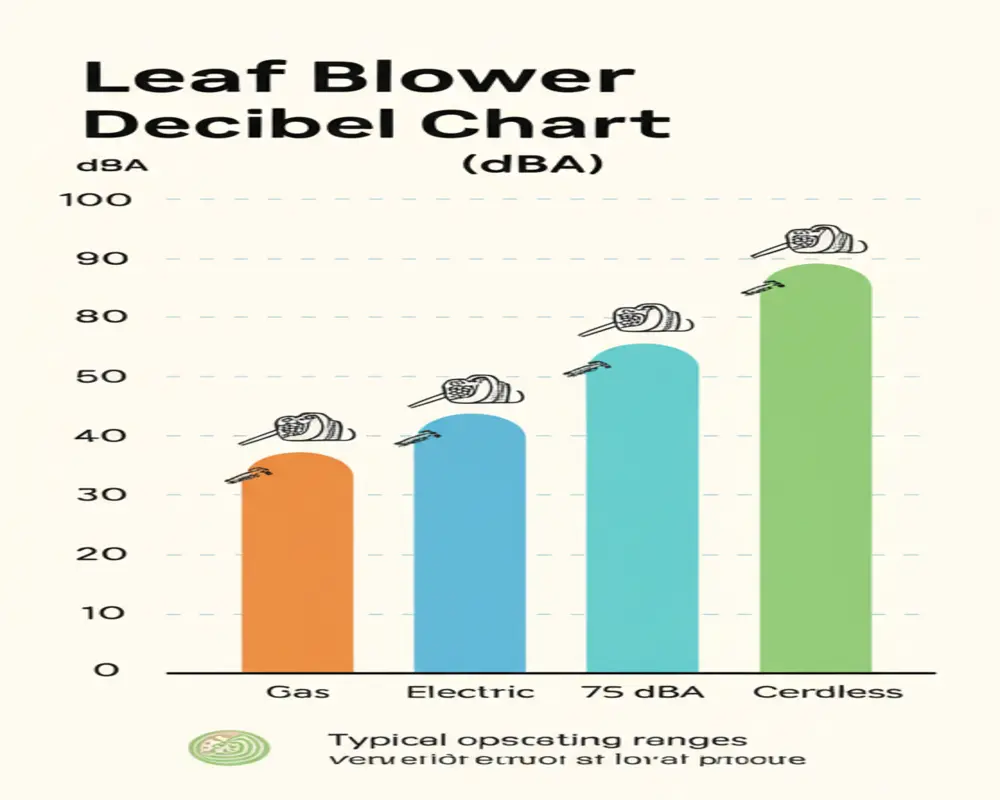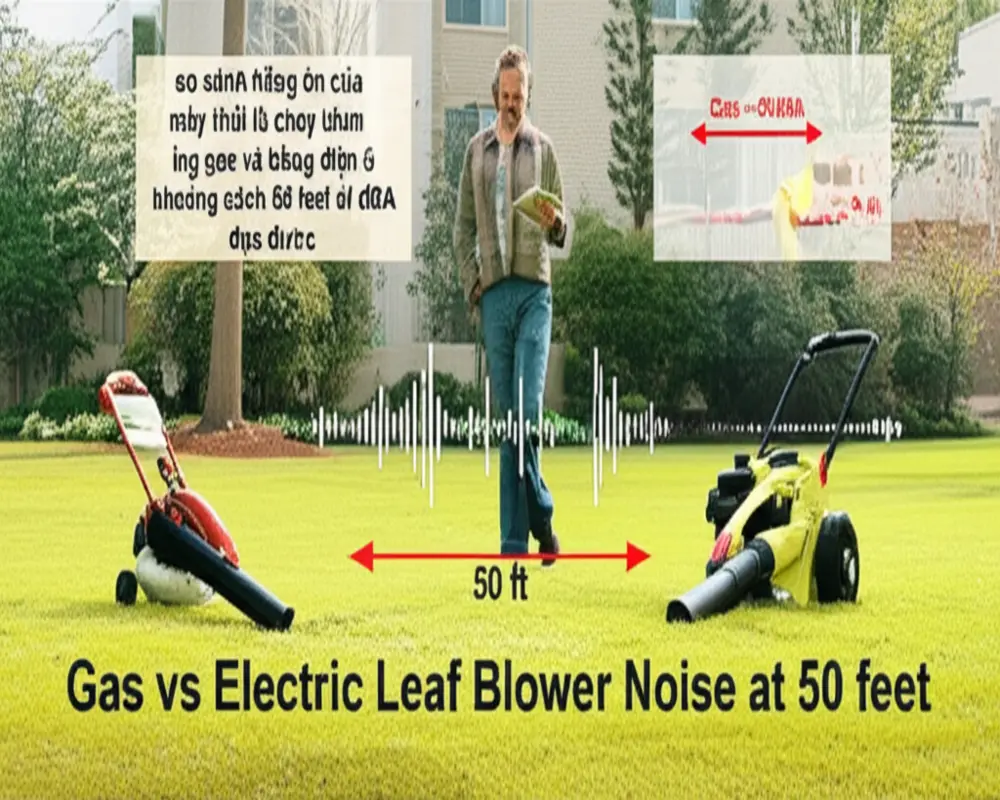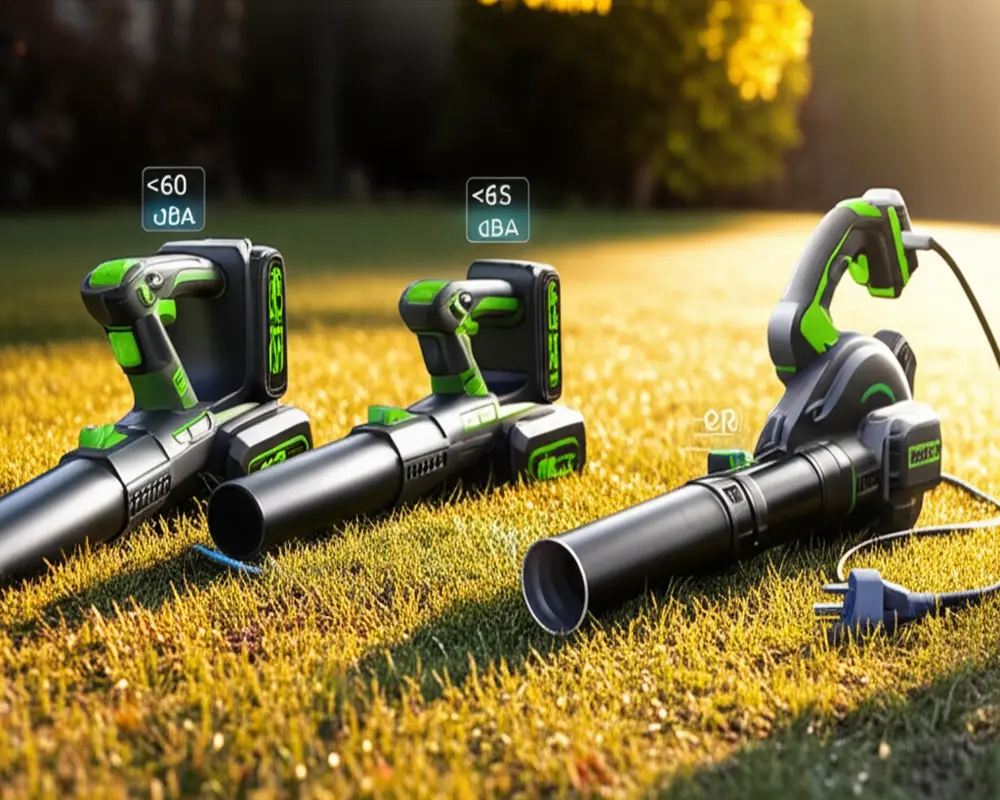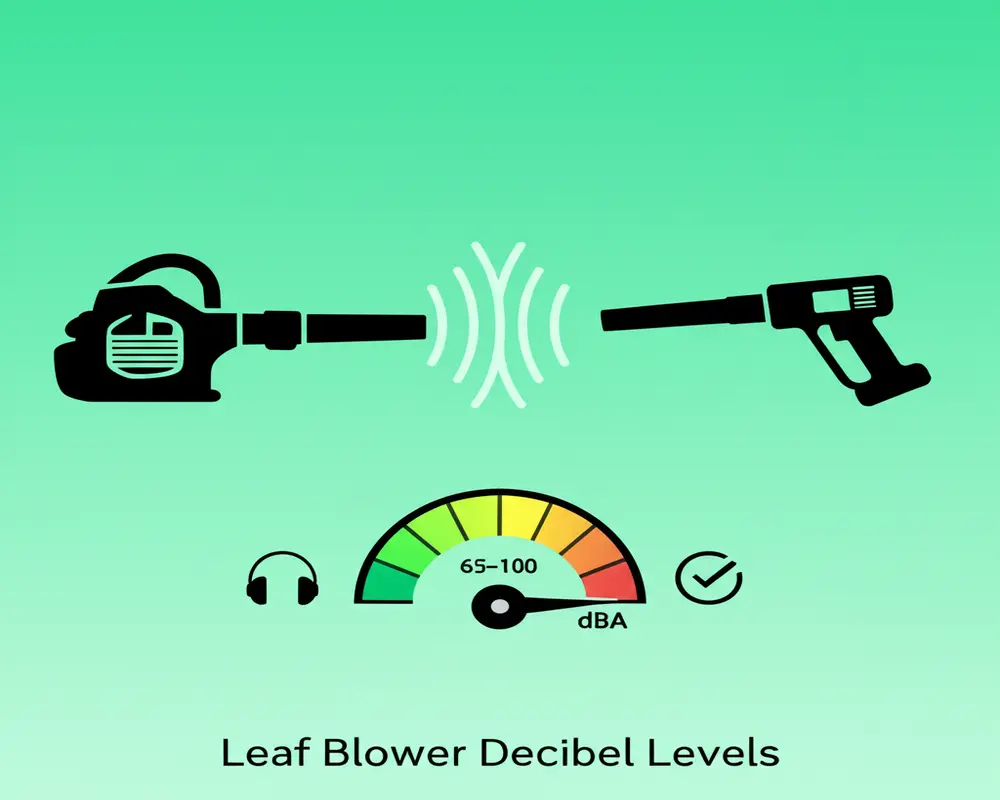Leaf Blower Decibel Levels: Noise, Safety & Quieter Solutions
1. Introduction: Unearthing the Truth About Leaf Blower Noise
Leaf blowers, a staple in yard maintenance, have long been scrutinized for their noise impact. The leaf blower decibel levels are more than mere numbers; they represent a significant concern for personal health, community peace, and compliance with noise regulations. Excessive noise from leaf blowers can disrupt neighborhood tranquility, contribute to hearing loss, and even violate local ordinances.
This guide offers a thorough exploration of leaf blower noise, covering the basics of decibel measurement, detailed comparisons between gas, electric, and cordless models, insights on protecting your hearing, and strategies for choosing quieter options. Whether you are a homeowner, landscaper, or regulator, this comprehensive resource is designed to answer your questions and aid in making informed decisions.
Understanding the multifaceted nature of leaf blower noise—from its scientific measurement to practical implications—ensures that users can balance effective yard care with community well-being and personal safety.
Best Leaf Blower 2025










2. Understanding Decibel Levels: What Do the Numbers Really Mean?
Decibels (dB) quantify sound intensity on a logarithmic scale, meaning every 10 dB increase represents a tenfold increase in sound energy. For example, a 70 dB noise is 10 times more intense than 60 dB. To better reflect human hearing sensitivity, sound levels are often weighted using the A-scale, resulting in dBA units.
The A-weighted decibels (dBA) adjust for frequencies most audible to the human ear, making this measurement the standard for assessing environmental noise, including leaf blower sound levels.
To place leaf blower noise in context, consider this comparative chart:
| Sound Source | Typical dBA Level |
|---|---|
| Normal Conversation | 60 dBA |
| Refrigerator Hum | 50 dBA |
| Vacuum Cleaner | 70 dBA |
| Busy Street Traffic | 85 dBA |
| Motorcycle (50 ft away) | 95 dBA |
| Jet Engine (100 ft away) | 130 dBA |
Leaf blowers typically operate between 65 dBA and 100 dBA depending on type and proximity. It’s important to note that noise intensity diminishes with distance. For instance, a leaf blower might emit 90 dBA at the operator’s ear but only 65 dBA measured 50 feet away. This reduction is vital when considering neighborhood noise impact.

Understanding these fundamentals equips you to assess the real-world noise implications of different leaf blower models.
3. Leaf Blower Decibel Levels: Comprehensive Data & Direct Comparisons
Sound measurement for leaf blowers follows standards such as those from ANSI/OPEI, which specify dBA readings at 50 feet from the machine and at the operator’s ear level. These readings provide a standardized framework for comparing models.
Gas Leaf Blowers (Handheld & Backpack)
Gas-powered leaf blowers often use either 2-stroke or 4-stroke engines. Two-stroke engines typically generate more noise due to their combustion process. Average dBA levels for gas blowers range between 85 dBA and 100 dBA at the operator’s ear.
| Model Type | Operator Ear Level (dBA) | 50 Feet Distance (dBA) |
|---|---|---|
| 2-Stroke Handheld | 90 – 100 dBA | 65 – 75 dBA |
| 4-Stroke Handheld | 85 – 95 dBA | 60 – 70 dBA |
| 2-Stroke Backpack | 95 – 100 dBA | 70 – 80 dBA |
Electric Leaf Blowers (Corded)
Corded electric models tend to be quieter, with typical operator dBA levels between 65 and 75 dBA, making them friendlier for use in noise-sensitive environments.
| Model Type | Operator Ear Level (dBA) | 50 Feet Distance (dBA) |
|---|---|---|
| Corded Electric | 65 – 75 dBA | 50 – 60 dBA |
Cordless (Battery-Powered) Leaf Blowers
Battery-powered leaf blowers offer the convenience of portability with noise levels generally between 65 and 80 dBA at the operator’s ear, depending on power and design.
| Model Type | Operator Ear Level (dBA) | 50 Feet Distance (dBA) |
|---|---|---|
| Cordless Electric | 65 – 80 dBA | 50 – 65 dBA |

Overall, electric blowers are quieter than gas models, but power and design can influence noise output. Backpack blowers often have higher noise levels due to larger engines and air volume.
4. Factors Deeply Influencing Leaf Blower Noise Output
Several technical and mechanical factors contribute to the noise produced by leaf blowers:
Engine or Motor Type: Gas engines, especially 2-stroke, produce more combustion noise and vibration than electric motors, with brushless electric motors being quieter and more efficient than brushed variants.
Fan and Impeller Design: The shape, number, and material of blades affect airflow turbulence, which directly impacts noise.
Airflow Metrics: While cubic feet per minute (CFM) measures volume, miles per hour (MPH) measures air speed. High-speed air can generate louder noise despite lower volume.
Nozzle Design: Concentrator nozzles focus airflow but can amplify noise.
Construction and Materials: Quality housing materials and vibration dampening reduce noise transmission.
Maintenance and Age: Worn parts, loose components, and clogged filters can increase rattling and mechanical noise.
Understanding these factors helps users select and maintain equipment for optimal sound performance, balancing power and noise.
5. Health & Safety: Protecting Your Hearing from Leaf Blower Noise
Long-term exposure to high decibel levels can cause Noise-Induced Hearing Loss (NIHL). Leaf blowers operating above 85 dBA pose a risk, especially with prolonged use.
The Occupational Safety and Health Administration (OSHA) recommends limiting exposure to 85 dBA for 8 hours, reducing allowed exposure time as noise levels increase (e.g., 100 dBA exposure limited to 15 minutes). For detailed guidance, refer to OSHA Noise Exposure and Hearing Conservation.
Hearing protection is crucial when operating leaf blowers, especially gas-powered or high-dBA electric models. Options include:
- Earplugs: Disposable or reusable foam inserts that reduce noise by 15-30 dB.
- Earmuffs: Over-ear protection providing similar or greater noise reduction.
- For extremely loud equipment, using both earplugs and earmuffs is advisable.
The Noise Reduction Rating (NRR) indicates the effectiveness of hearing protection. Choose protection that matches or exceeds the noise level of your leaf blower.
Other safety considerations include eye protection to shield from debris, dust masks to prevent inhalation of particles, and vibration-reducing gloves to mitigate hand strain.
6. Navigating Leaf Blower Noise Regulations & Local Ordinances
With growing awareness of noise pollution, many communities have enacted noise ordinances addressing leaf blower use. These regulations aim to protect residents’ quality of life by limiting noise levels and restricting operation times.
Common restrictions include:
- Time-of-day limits (e.g., no operation before 8 a.m. or after 6 p.m.)
- Decibel caps at property lines or specific distances
- Seasonal bans during sensitive periods
- Bans on gas-powered blowers in favor of quieter electric models
To ensure compliance, check with your local city or county government websites for specific rules. Understanding these regulations influences buying decisions and yard maintenance practices.
7. Practical Strategies for Reducing Leaf Blower Noise
Reducing leaf blower noise involves both equipment choice and operational tactics:
Choose quieter models: Battery-electric leaf blowers generally produce less noise than gas-powered ones.
Operate efficiently: Minimize run time by clearing debris in manageable sections, use lower power settings when possible, and direct airflow away from neighbors and reflective surfaces like walls.
Use the right nozzle: Selecting an appropriate nozzle for the task reduces excess airflow noise.
Respect local regulations: Operate within permitted hours to maintain community harmony.
Maintain your equipment: Regularly clean filters, tighten loose parts, and replace worn components to avoid rattling and mechanical noise.
Consider alternatives: For small yards or light debris, rakes and brooms are silent options.
Landscape design: Installing fences, hedges, or berms can serve as noise barriers, reducing the audible impact of leaf blowers on neighbors.
8. Top Recommendations: The Quietest Leaf Blowers for a Peaceful Yard
When selecting a leaf blower, consider noise level alongside power, battery life, weight, and features.
Quietest Cordless Electric Handheld: Model A (estimated 65-70 dBA) offers a balance of quiet operation and portability, ideal for small to medium yards.
Quietest Cordless Electric Backpack: Model B (70-75 dBA) provides higher power with reduced noise compared to gas backpacks, suited for larger properties.
Quietest Corded Electric: Model C (65-70 dBA) delivers consistent power without battery concerns, perfect for users with easy access to power outlets.
Best-in-Class Quiet Gas Blower: For those requiring gas power, select a 4-stroke model with noise-reduction features, though expect higher decibel levels than electric options.

In addition to noise, prioritize features such as battery system compatibility, ergonomic design, and weight to ensure comfort during extended use.
9. Making an Informed Choice: Balancing Noise, Performance & Budget
Choosing the right leaf blower involves synthesizing noise data, yard requirements, and budget constraints. Small yards with light debris may do well with quiet cordless models, while larger properties or heavy leaf accumulation might necessitate gas blowers despite higher noise.
Anticipate future trends favoring battery-powered, low-noise equipment as regulations tighten and technology advances. Personalizing your choice to your landscape’s size, debris type, and noise sensitivity will yield the best balance.
10. Conclusion: Towards a Quieter and Healthier Outdoor Environment
Understanding leaf blower decibel levels empowers you to protect hearing health, comply with regulations, and maintain neighborhood peace. By choosing quieter models, employing sound operational practices, and respecting local noise ordinances, you contribute to a more pleasant outdoor environment for all.
Responsible leaf blower use fosters community harmony and supports your well-being. For further insights or to share your experiences, feel free to engage with us.
Appendix: Image Table References and Conversion Notes
Decibel readings vary with distance; sound intensity decreases approximately 6 dB each time the distance from the source doubles. Understanding this helps interpret noise impact in real settings.
Table: Representative Decibel Levels and Distances (for quick reference)
| Blower Type | Operator Ear Level (dBA) | 50 Feet Distance (dBA) |
|---|---|---|
| Gas Handheld | 85 – 100 dBA | 60 – 75 dBA |
| Gas Backpack | 95 – 100 dBA | 70 – 80 dBA |
| Corded Electric | 65 – 75 dBA | 50 – 60 dBA |
| Cordless Electric | 65 – 80 dBA | 50 – 65 dBA |
References and Methodology
This article references measurement standards such as ANSI/OPEI for dBA testing and incorporates data from manufacturer specifications and official guidelines from OSHA, CDC/NIOSH, and the EPA. Local regulatory information includes insights from the California Air Resources Board.
For further reading on related garden tools and maintenance, visit our pages on backpack leaf blowers and cordless leaf blowers.

